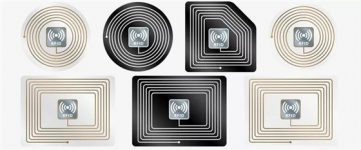
Application of RFID in warehousing
[ad_1]
RFID (Radio Frequency Identification) technology, also known as radio frequency identification, or electronic tag, is a communication technology that can identify specific targets and read and write related data through radio signals without the need to establish mechanical or optical connections between the identification system and specific targets get in touch with.

In traditional warehousing management, it is often seen that items are manually distinguished and verified, and the goods entering and leaving the warehouse must have documents as evidence, which is inefficient and easy to make mistakes. In warehouses that use RFID technology, this problem can be solved relatively easily.
The core of RFID is to make each product have its own specific piece of information. While distinguishing from other products, RFID readers are set up at the import and export of the warehouse to coordinate with it, which will read the goods passing through the reader. Information, in the warehouse, you can use the RFID handheld client to scan the items. In this way, it is easy to realize the information collection and sorting of the identification, positioning, tracking, transportation, storage and retrieval, and delivery of the goods from the goods entering the warehouse to the goods leaving the warehouse.
Compared with the traditional barcode/QR code warehouse entry and exit management system, RFID overcomes the following problems:
a. In the case of poor light conditions, the barcode reader cannot scan the barcode normally;
b. Only one barcode/QR code can be scanned at a time, which is inefficient;
c.. Barcode/QR code labels are easy to break or fall off. If this happens, the scanner will not be able to identify the target;
d. Barcode/QR code scanners must be close and without obstructions before they can read barcodes;
What are the differences between RFID and barcodes and QR codes? Let’s compare them with a table:

01 Goods and labels
Put RFID tags on the goods, or place the goods with RFID, to complete the binding of the goods and the tags.

02 Goods warehousing
After receiving the cargo information and vehicle information, it is transmitted to the warehouse, and the warehouse’s storage management system will allocate the warehouse area and storage space of the goods according to the actual situation. When the goods arrive, the warehouse staff can use the RFID reader to verify the goods. The reader will quickly read the relevant information of the goods, which can quickly check whether the goods are correct, and ensure that the goods are put into the warehouse in time. After the goods are delivered to the designated warehouse area, the reader will scan and check again when entering the warehouse, and will transmit the information to the warehouse management system. When there is an error, it will be corrected manually.
Compared with traditional warehousing management business processes, RFID smart warehousing has the following advantages:
a. The storage space of the warehouse area is no longer arranged by the dispatcher, but allocated by the system;
b. There is a reader to scan when warehousing and putting on the shelf, which improves the accuracy.
03 Goods out of warehouse
When leaving the warehouse, the system will automatically call up the relevant information of the goods to determine the warehouse area and location of the goods, and then use a forklift to remove the goods, and check whether the goods are accurate through RFID reading, and the green light will be on when it is accurate. When scanning, the cargo information will be entered into the computer, the warehouse management system pickup information has been confirmed, and the cargo information in the system will be automatically changed.
Compared with the traditional warehouse management outbound business process, the use of RFID technology has the following advantages:
a. The system will automatically generate the pick-up list, instead of manually writing the pick-up list, which reduces the error rate;
b. Sorting is carried out by an automatic sorter with RFID reader, which improves efficiency and reduces the error rate;
c. The RFID reader will check the goods out of the warehouse, which improves the inspection efficiency and can realize the automatic update of the goods inventory information.

04 Unusual cargo out of warehouse
When there is an error, the system will remind you that the red light is on and traffic is prohibited.

05 Unusual goods are out of the warehouse
Managers need to return to eliminate the abnormality and go to pass the warehouse again, and then leave until the inspection is correct.

06 Enter the title here
Because the traditional inventory work is done manually, it not only wastes a lot of human resources, but also because the operation is cumbersome, it is easier to make mistakes, and the efficiency is low. But after adopting RFID technology, these problems can be solved well, so that the inventory work can be completed quickly, and the accuracy rate is high.
The information of the goods can be read through the reader and compared with the goods in the system. It is easy to find out the quantity, type, warranty period and other information of the goods.

Compared with the traditional inventory work, the RFID technology has the following advantages:
a. Save a lot of human resources and reduce labor costs.
b. Improve work efficiency and accuracy, and reduce business losses.
c. The cargo position is adjusted through the management system, without manual adjustment, which is more intelligent and accurate.
[ad_2]



